20+ SAMPLE Resource Management Plan
-
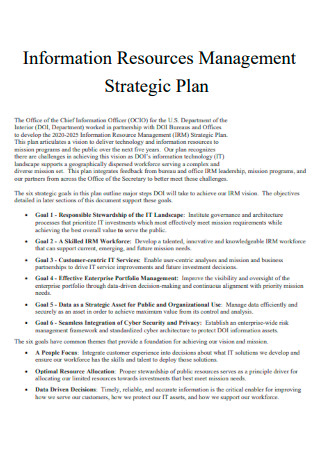
Information Resources Management Strategic Plan
download now -
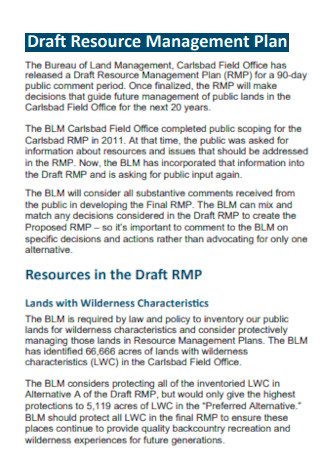
Draft Resource Management Plan
download now -
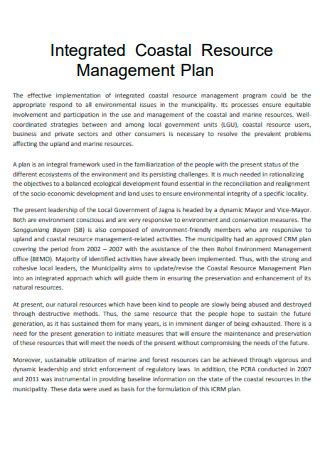
Integrated Coastal Resource Management Plan
download now -

Water Resources and Drought Management Plan
download now -
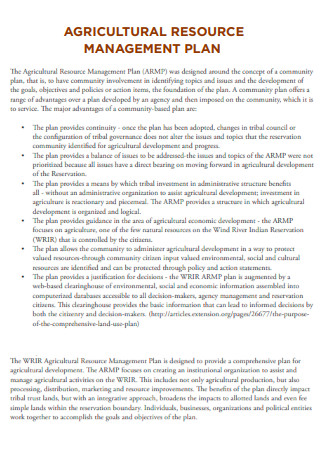
Agriculture Resources Management Plan
download now -

Regional Resource Management Plan
download now -

Human Resource Management Strategic Plan
download now -
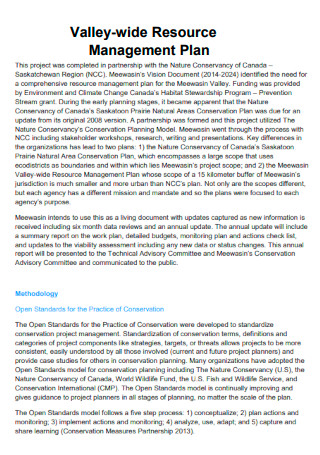
Valley Wide Resource Management Plan
download now -
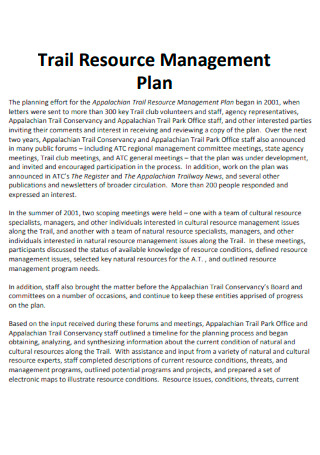
Trail Resource Management Plan
download now -
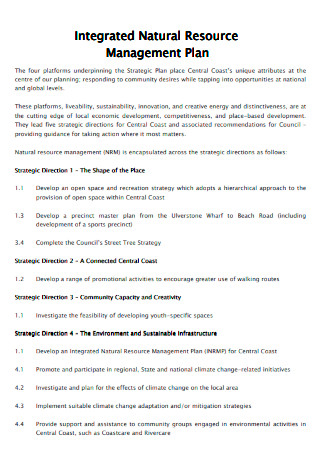
Integrated Natural Resource Management Plan
download now -
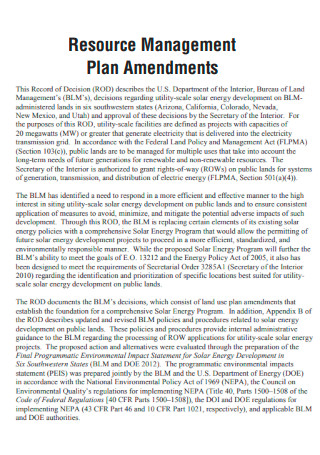
Resource Management Plan Amendments
download now -

Sample Resource Management Plan
download now -
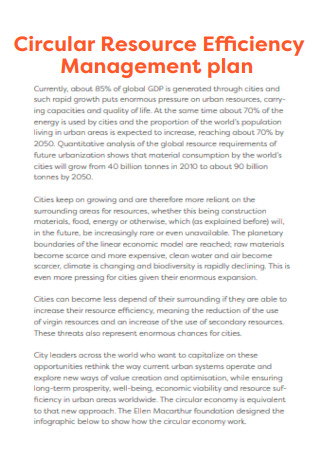
Circular Resource Efficiency Management plan
download now -
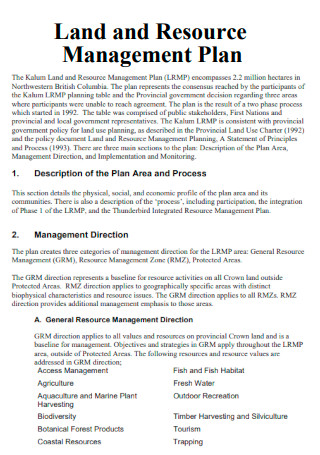
Land and Resource Management Plan
download now -

Natural Resource Management Plan for Laboratory
download now -
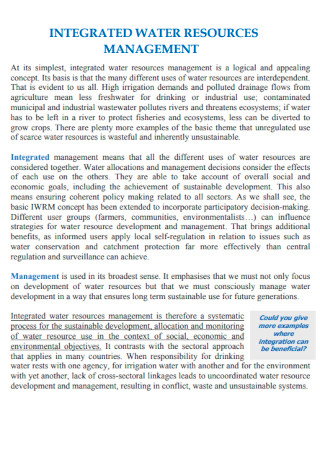
Integrated Water Resources Management
download now -
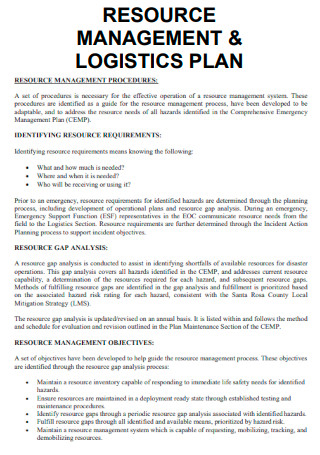
Resource Management & Logistics Plan
download now -
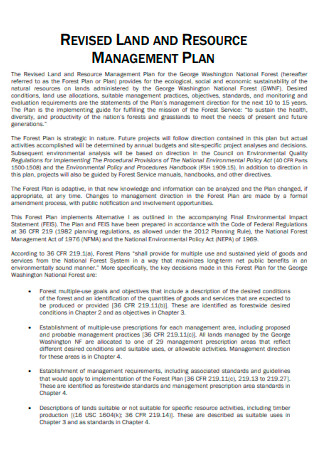
Revised Land and Resource Management Plan
download now -

Integrated Solid Waste and Resource Management Plan
download now -
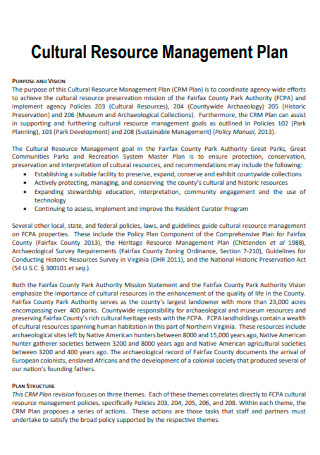
Cultural Resource Management Plan
download now -
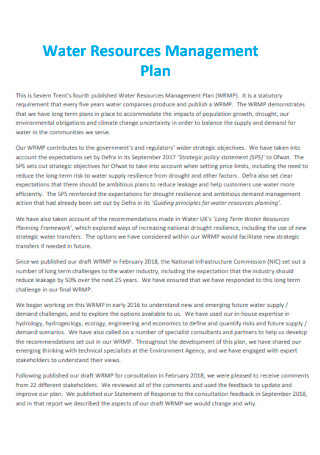
Water Resources Management Plan
download now
FREE Resource Management Plan s to Download
20+ SAMPLE Resource Management Plan
What Is a Resource Management Plan?
Components of a Resource Management Plan
Steps In Constructing an Effective Resource Management Plan
FAQs
What is the importance of a resource management plan?
What are the three stages of resource planning?
What are the four types of resources?
What Is a Resource Management Plan?
Resource management focuses on the efficient and effective use of resources associated with completing a project. As such, a resource management plan accounts for all the resources, including people, tools, materials, equipment, and workspaces, that an organization requires on a project. The plan also serves as a guide on the process of categorizing, allocating, managing, and releasing these resources during the project. The resource management plan provides a framework for the team to optimize the available resources to effectively and efficiently meet project goals and objectives. Quality plans in resource management help determine if there is a need for more or less of a particular resource, whether it is skilled and experienced employees or team members or a specific piece of equipment. The plan is also inclusive of a work or project timeline for the resources a company uses to lessen downtime. Creating the timeframes allows organizations and teams to shed light on the periods when the project faces capacity constraints that require additional resources in the form of freelance workers. Providing employees, staff, and team members with a copy of the resource management plan guarantees that the organization and the project management team can put the right resources at the right place and time as much as possible when completing projects.
According to the information coming from the United States Bureau of Labor and Statistics, the median pay for practicing resource managers is over 126 thousand dollars, with a job outlook of over 9 percent for the following years.
Components of a Resource Management Plan
Resource management is a vital process that happens in a project or an organization, and having a comprehensive research management plan is necessary for the smooth operation of businesses and teams. Resource management plans must contain information about a specific project, especially the resources that it uses to ensure the completion of each task and activity for the project to finish on or before the set due date. There is no one format for writing the resource management plan. Nonetheless, there are vital elements that the resource management plan must include to deliver a successful project. The section below covers the different components necessary to have a comprehensive resource management plan.
Steps In Constructing an Effective Resource Management Plan
Resource management is a process of determining the required resources, the number of resources, and the required time to complete a project. The process determines the process of project completion and predicts the cost of resources required and the project timeline leading to its completion. Since a resource management plan carries the necessary information about the resources, the person responsible for constructing the document must thoroughly prepare the document before the implementation of the project. The section below covers the steps in constructing a resource management plan for your next project.
Step 1: Determine the Resources Necessary for the Project
The first step in resource management planning is to decide on the resources necessary to accomplish the project. The information comes from knowledge about the project and its resources, understanding of project goals and objectives, and aligning them with resource skillsets. Teams can also use similar projects in the past as a reference point. It helps to reduce upfront project management work and aids in the accurate prediction of the progress of the current project. Teams also have resource management software at their disposal to create a wireframe. The wireframe is a resource management plan with unnamed resources for a specific role without the manager filling it with a name. In doing so, teams can block specific resource allocations until there is a clearer view of the project needs.
Step 2: Assign the Right Resources to Appropriate Tasks
Efficient resource management leads to the ability to match project needs with the best possible individuals to manage the tasks. When corresponding tasks with resources, ensure that the resources have the right skillset and sufficient time to accomplish the job.
Step 3: Budget a Significant Amount of Time for Each Resource
It takes skill and experience to assign a specific amount of time to accomplish a task. The profitability of an organization depends on the proper allocation and efficient use of resources. On the side, project managers must also avoid overscheduling resources. Overscheduling results in missing deadlines, and the quality of work will suffer.
Step 4: Schedule the Resources According to the Expected Availability
The next step in the resource management plan is to schedule the resources after determining the project needs, and it is a critical step in resource management to predict the completion of a project with accuracy. A project manager must be able to understand the needs of the current project and take note of the present and recurring tasks that are taking up the time of resources. Using a resource management tool that shows the current available hours, tentative allocations, booked hours, etc., helps make the appropriate decisions and adjustments to the project schedule.
Step 5: Keep a Pulse on the Project Progression
It becomes easier to resolve challenges before they become actual problems than try to repair the damage after it has already manifested. When it comes to resource management planning, the scenario means that the quicker the team responds to arising problems and difficulties, the easier it is to develop a solution. Always take the time to check on the progress of the project by checking in regularly with the resource management tool and see if the actual performances match up with the project resource allocations. Identify if there are any bottleneck situations, the occurrence of project delays, insufficient resources, or the need for coaching.
Step 6: Expect To Make Adjustments and Perform a Post-Project Review
When dealing with human resources in resource management, there are instances when not everything will go as planned. As such, project managers must be able to recognize that changes are imperative, and decisions for these adjustments follow the scope of work adjustment, slow approvals, and other unforeseen challenges. Resource management planning helps the team and the team members to make informed decisions according to the availability and workload of the resources. Lastly, compare the projected resources and work schedules to the actual resources used in the project. State if these resources are in line with the calculations and estimates and if there is a need to apply necessary changes to similar projects in the future. Aside from looking at project reports, ask the resources if they felt the project went on smoothly and if they have suggestions for process improvement in the future.
FAQs
What is the importance of a resource management plan?
Resource management guarantees that resource managers possess real-time and on-demand visibility of resources to have greater control over delivering a project. With the proper execution of resource management, organizations and teams can reduce costs, boost productivity, and improve inefficiencies.
What are the three stages of resource planning?
The three steps of resource planning focus on the identification and inventory of resources, planning an evolving structure with the use of technology, and skill, setting up for the implementation of resource development plans and matching resource development plans with overall organizational plans.
What are the four types of resources?
There are four types of resources or factors of production in businesses. It includes natural resources in the form of land, labor resources in human capital, capital in machinery, equipment, factories, and entrepreneurship.
Resource management is a critical factor in managing projects and project management teams. Project managers must guarantee that the resource management plan contains all the necessary resources and information that enables resources to function effectively and smoothly, ensuring that the project finishes on time and within budget. Every organization and project manager working on a project must write a resource management plan to help resources in their work to accomplish a project. Download resource management plan templates from the article above to start working on your next project. Get yours today, only from Sample.net.
